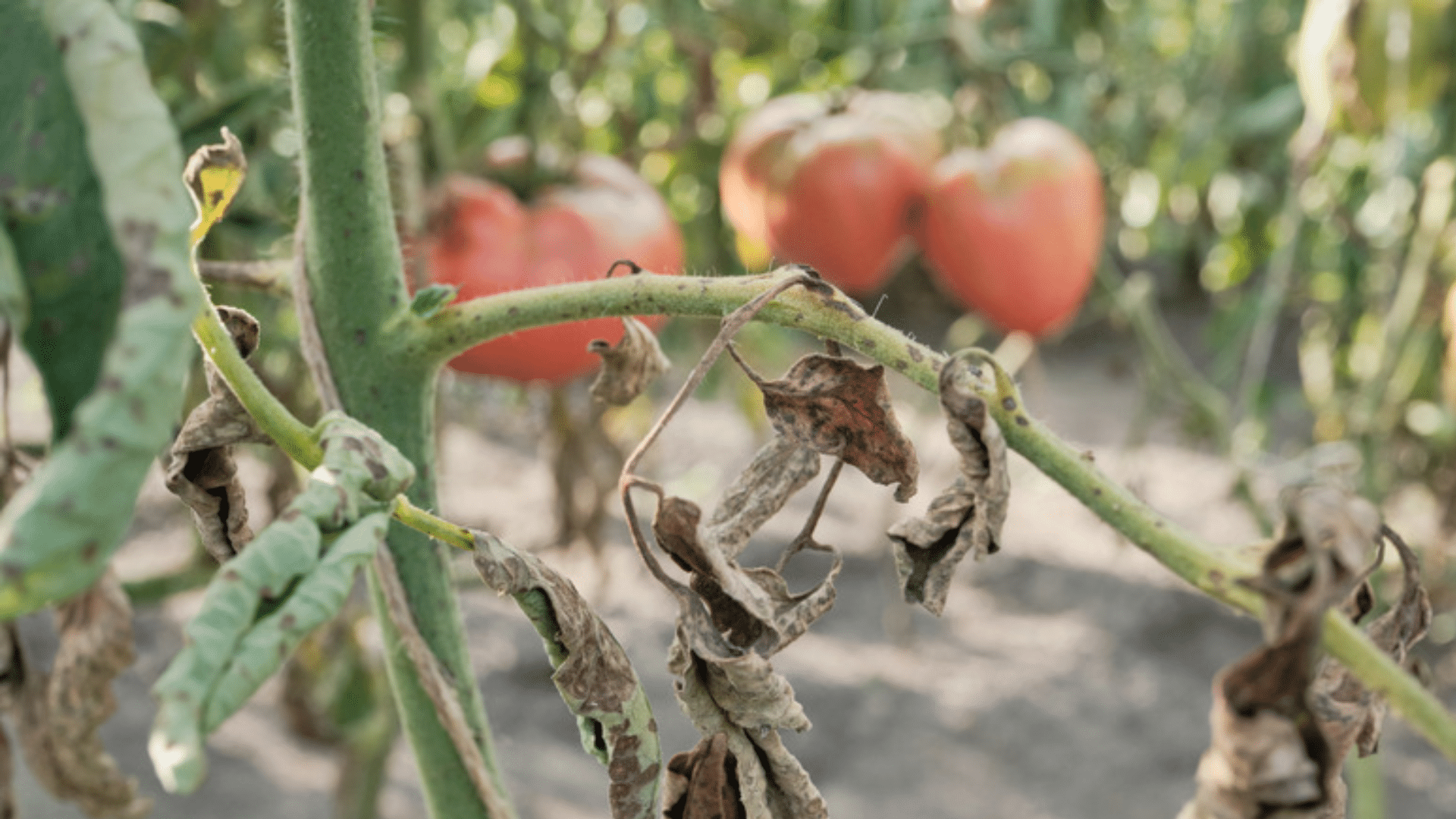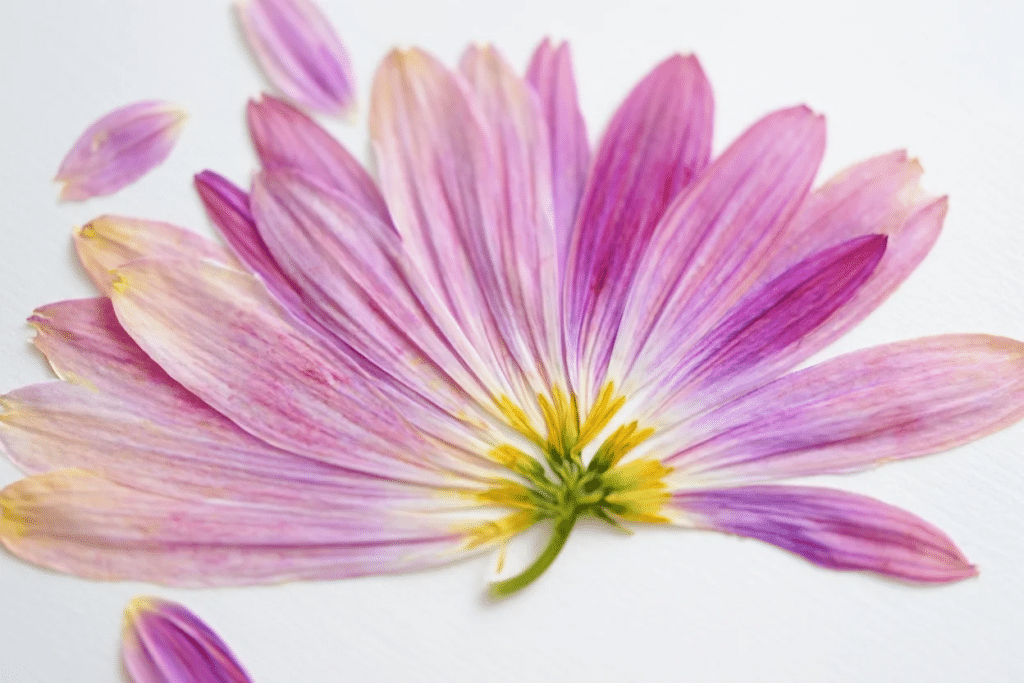Your tomato plants looked healthy yesterday. Today they’re drooping and wilting. This happens to most gardeners, and it’s often a sign your plants need help fast.
I’ll show you exactly how to spot tomato wilt symptoms and stop the disease before it kills your plants.
In this blog, you’ll find simple tips to diagnose the problem. By the end, you’ll know exactly what to do when your tomatoes start wilting and how to prevent it from happening again.
What Is Tomato Wilt?
Tomato wilt occurs when plants are unable to transport water from their roots to their leaves. The stems and leaves droop, even with moist soil.
Two main categories cause this problem. Water-related stress comes from drought conditions that dry out your plants, or when your underwatered tomato plant shows classic wilt symptoms.
Water stress usually affects the whole plant at once, and you can fix it with proper watering. Disease wilts start in one area and spread slowly, blocking your plant’s water system from the inside.
Key Symptoms of Tomato Wilt
Learning to spot the warning signs can save your tomato plants. Here’s what to look for when checking your garden.
- Visual signs on leaves start with drooping and curling at the edges. You’ll see uneven yellowing that doesn’t follow a pattern. Some leaves stay green while others turn yellow on the same plant.
- Stem changes show dark streaks running up the main stem. Cut open an affected stem and you’ll see brown or black tissue instead of healthy white.
- Plant behavior gives the biggest clue. Disease wilt doesn’t recover at night like an underwatered tomato plant would. The disease will remain constant and worsen each day, even with proper watering.
Common Causes of Tomato Wilt

Different causes create different patterns. Here’s how to tell them apart and what to expect from each type.
Fusarium wilt
It starts at the bottom and works its way up your plant. Lower leaves turn yellow first, then the yellowing climbs higher each week.
This fungus lives in soil and enters through roots. It thrives in warm weather and spreads more quickly when temperatures remain above 80°F. Older plants resist it better than young seedlings.
Verticillium wilt
It creates uneven yellow patches across your plant. Some branches look healthy while others fade and droop. Your plant declines slowly over several weeks instead of dying quickly.
This fungus prefers cooler conditions and often strikes during spring or fall. It can stay dormant in soil for years before attacking.
Bacterial wilt
It hits fast and hard. Plants collapse suddenly. When you squeeze an infected stem, brown ooze comes out.
This tells you bacteria have taken over the water system. Hot, humid weather makes it spread faster. Insects and contaminated tools help it move between plants.
Environmental stresses
Heat waves cause plants to droop during the midday sun. An underwatered tomato plant shows similar symptoms but recovers with proper watering and care.
Cold snaps, strong winds, and root damage from digging also cause temporary wilting that looks scary but isn’t permanent.
How to Distinguish Wilt from Water Problems
Before you panic about disease, check the simple stuff first. Water problems cause most wilting issues.
1. Check soil moisture by sticking your finger 2-3 inches deep. Dry soil means your underwatered tomato plant needs water. Soggy soil suggests overwatering or poor drainage.
2. Check for yellow leaves: When checking, also pay attention to leaf color. Yellow tomato leaves often get blamed on watering mistakes, but they can signal other stress factors, too.
3. Inspect the roots by digging gently around the base. Healthy roots look white or light brown. Black, mushy roots mean root rot. Dry, brittle roots signal drought stress.
4. Test your diagnosis with a simple trial. Give a wilted plant water and wait 4-6 hours. Water stress recovers quickly. Disease wilt stays the same or gets worse.
How to Stop and Prevent Tomato Wilt
You can’t cure wilt disease, but you can stop it from spreading and prevent future outbreaks.
- Remove infected plants: Pull up diseased plants completely. Bag and trash them. Clean tools with rubbing alcohol.
- Rotate crops: Don’t plant tomatoes in the same spot for 3-4 years. Move them each season.
- Choose resistant varieties: Look for V, F, or N resistance codes on seed packets and plant tags.
- Build healthy soil: Add compost and mulch. Healthy soil fights off harmful pathogens naturally.
- Water consistently: An underwatered tomato plant becomes vulnerable to disease. Keep moisture steady with drip irrigation.
Conclusion
Spotting tomato wilt early makes all the difference between losing one plant and your entire crop.
An underwatered tomato plant recovers with proper care, but disease wilt requires immediate action. Your tomatoes depend on you to catch problems before they spread.
Check your plants regularly, trust what you see, and don’t hesitate to act when something looks wrong. A few minutes of daily observation can save months of hard work.













